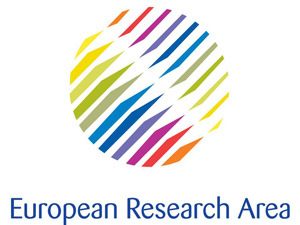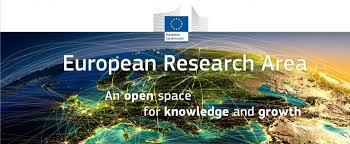European Research Area (ERA) is the main area of conducting research policy in the European Union. Its overall goal is to create a unified area of research, open to the whole world and enables free circulation of researchers, scientific knowledge and technology. In order to reduce fragmentation of scientific activities as well as increase the EU’s international competitiveness, it is important to further strengthen the ERA by gradually harmonizing the policies of individual European countries in the field of research and innovation.
Establishment of ERA
The concept of the ERA was raised during the European Council meeting in Lisbon in March 2000, and the initiative itself gained wider interest with the publication in 2007 of the green paper entitled ‘The ERA Area: New Perspectives’, which describes the progress made so far and the vision for the development of ERA. According to this document, a fully developed European Research Area should be characterized by effective circulation of knowledge and qualified scientific staff, well-coordinated programs and clearly defined scientific and research priorities, modern R&I infrastructure or an openness to the international market of research and innovation. In 2009, the Lisbon Treaty formally introduced the ERA (Article 179 Treaty on the Functioning of the European Union), making the free movement of scientists, scientific knowledge and technology throughout Europe the official goal of the EU, and opened the way for the adoption of European legislation to enforce its implementation (Article 182 (5) TFEU). Furthermore, in July 2012, the European Commission adopted the Communication on ERA A Reinforced European Research Area Partnership for Excellence and Growth, where its key priorities were set up.
The current implementation of the European Research Area is based on the ERA Roadmap 2015-2020 together with ERA National Action Plans in which Member States and Associated Countries present their goals and initiatives. It should be emphasized that these initiatives are undertaken within six priority areas for the European Research Area:
- Priority 1. More effective national research systems
- Priority 2a. Optimal transnational cooperation and competition
- Priority 2b. Research infrastructures
- Priority 3. An open labour market for researchers
- Priority 4. Gender equality and gender mainstreaming in research
- Priority 5. Optimal circulation of, access to and transfer of scientific knowledge, including ‘knowledge circulation’ and ‘open access’
- Priority 6. International cooperation
It is worth adding that the monitoring of progress in the implementation of ERA is carrying out by progress reports, which are submitted to the EC every two years. Then – based on the main indicators proposed by the European Research Area and Innovation Committee (ERAC) – a classification of countries is prepared in terms of implementation of ERA priorities.
The European Research Area and Innovation Committee (ERAC)
Recommendations for increasing the effectiveness of national research systems under ERA are developed by the already mentioned ERAC Committee, which primarily advises the Council, the European Commission and EU Member States in priority areas for the European Research Area. Members of ERAC are delegates of EU Member States and the Commission, while observers of its activities can be non-EU countries participating in EU research and innovation programs (including Norway, Israel, Serbia, Turkey, Ukraine).
ERAC meets four times a year in plenary sessions. Together with ERAC, six sub-groups are in charge of advancing and monitoring other specific ERA priorities, among others:
- The Standing Working Group on Open Science and Innovation, SWG OSI
- The Standing Working Group on Gender in Research and Innovation, SWG GRI
- The Standing Working Group on Human Resources and Mobility, SWG HRM
Official Council meeting documents of ERAC and its sub-groups are available in the public register.
ERA – what has been done so far?
Despite some shortcomings in the functioning of the European Research Area, such as the low level of integration of research policies, it should be stressed out that there are many achievements under ERA:
- The development of over fifty European Research Infrastructures, of which 37 have already been implemented in areas such as energy, environment, health, social and cultural innovation, mobilizing nearly 20 billion euro for investment;
- The establishment of the EURAXESS network, which is present in 40 European countries and has over 600 support centers for researchers that help them free of charge in matters related to mobility and career development (mainly assistance in terms of travel conditions, accommodation, taxes, health insurance, and also financing opportunities for stays abroad);
- The adoption of The European Charter for Researchers and the Code of Conduct for the Recruitment of Researchers – the first document describes the rights and obligations to which both researchers and their employing institutions and organizations providing research funding are subject, while the second contains rules for the recruitment of researchers that employers should comply with, ensuring equal treatment of researchers in Europe;
- The implementation of The Human Resources Strategy for Researchers;
- The establishment of The European Open Science Cloud (EOSC) in 2018.

ERA – what’s next?
Undoubtedly, ERA offers great potential for improving the coordination, coherence and synergy of research and innovation policies, in particular in relation to the European Structural Funds related to research and innovation, mainly ERDF – European Regional Development Fund. This clear direction of the investments at Member States’ level can support alignment of efforts at national and EU level to meet the challenges facing Europe.
In 2019, the European Commission announced that despite numerous actions towards a well-functioning European Research Area, there is a noticeable slowdown in the implementation of its priorities while maintaining visible differences between European countries. This means that there is still room for further improvement and reflection on ways to accelerate, strengthen and further encourage the implementation of ERA priorities. In response, the Council called the European Commission to present a communication on the future of ERA by mid-2020. In the light of this and due to the end of the current ERA Roadmap in 2020, there has been a discussion on changes in the European Research Area for over a year.
First of all, the closer cooperation between ERA and the European Higher Education Area (EHEA) is discussed, particularly synergies between the Horizon Europe, Erasmus + program and the European Universities initiative. As a result, it will be possible to build lasting, effective relationships on the line of higher education – research – innovation in order to achieve a dynamic circulation of knowledge.
Secondly, the redefined ERA is to emphasize the social importance of science and to be “sensitive” to the needs of citizens. Therefore, it is important to bring science closer to society, and also to involve citizens in determining its basic directions.
Thirdly, the European Research Area should support the new model of sustainable growth and development driven by research and innovation that has been adopted by the EU.
Furthermore, European research policy should go hand-in-hand with other EU horizontal and sectoral policies, and benefit from the diversity of European research and innovation systems.
According to the opinion of the ERAC Committee of 23 January 2020, the strategic objectives of the reformed European Research Area are:
- Be wholly inclusive and collaborative, and increase research quality throughout Europe;
- Be seamless and connected, and drive Europe’s competitiveness;
- Be inspiring and open, and contribute to wider European policy objectives.
These ERA objectives correspond to the following strategic priority areas:
- Priority 1. Framework conditions for the production, circulation and use of knowledge, including research career issues;
- Priority 2. R&I-driven joint action with other policy areas in a global context;
- Priority 3. Relevance and visibility of R&I for society;
- Priority 4. Broad inclusiveness (minority issues, geographical diversity, gender equality in research).
It is worth noting that apart from the ERAC Committee and the EU institutions various organizations are taking part in the discussion on the future shape of the European Research Area. The Brussels Liaison Offices in the field of research and innovation (including Dutch NETH-eR), networks of European universities like The Guild, of which the Jagiellonian University is a member, as well as networks representing European regions such as ERRIN already presented their position papers on this issue.
What is more, on June 15 the first round of the ERA Tour des Capitales has been completed. This is an initiative of the European Commission that aims to strengthen cooperation with Member States / Associated Countries and their stakeholders in research and innovation, and to engage jointly in the debate on a new direction for the European Research Area, which will be taken into consideration in the forthcoming ERA communication. Because of the outbreak of the coronavirus pandemic, the EC offered the opportunity to conduct the ERA ‘Tour des Capitales’ through bilateral online meetings with national authorities and key stakeholders. Bulgaria, the Czech Republic, Denmark, Estonia, Greece, Hungary, Ireland, Malta, Norway, Romania, Spain and Switzerland participated in the first round of meetings. They discussed in particular about how to strengthen research excellence and the responsibility of Member States or how to increase ERA visibility, citizen involvement and the role of researchers. Before the outbreak of the pandemic, there were also two physical events in Italy and Austria. Other countries for which it was not possible to organise such meetings will be sending the results of their stakeholders’ surveys and their national positions in writing.

The presentation of the Communication on the future shape of the ERA was announced by the EC in the first half of July 2020.
If you want to receive similar information and to be regularly updated via PolSCA Office, subscribe to our newsletter!
Published: 2020-06-25
Author: J. Kramarczyk



